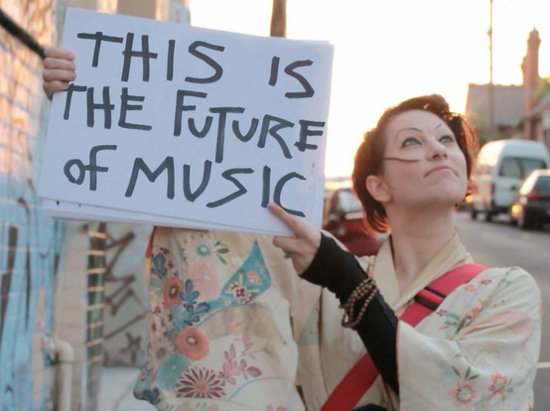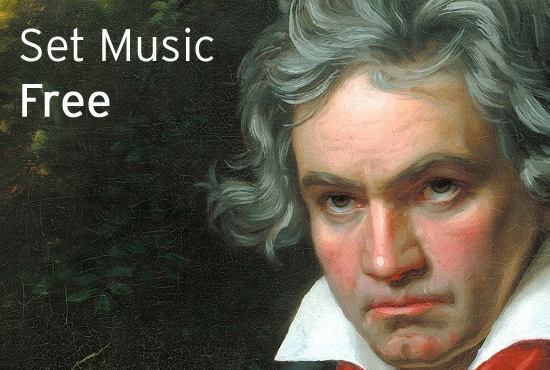Wired posted my new column yesterday, an attempt to coalesce some thoughts around a trend in fan funding that isn’t really happening yet, but really should be — fans hiring artists directly to make the art they want to experience and own. I’ve been thinking about this since 2008, and surprised it hasn’t emerged yet in a big way. I’m really just hoping that someone sees this and gives it a try.

Amanda Palmer blows up the music business.
Two weeks after Kickstarter launched in April 2009, I was fishing around for an idea to test the platform and launched a project for Kind of Bloop, an 8-bit tribute to Miles Davis’ Kind of Blue.
Like many to follow, my Kickstarter project hit the initial goal in the first few hours and eventually quadrupled it, with $8,600 raised from over 400 backers. Modest by today’s multimillion dollar blockbusters, it’s still considered one of the site’s early successes. The album was released shortly after, adored by the only 400 people in the world who find the idea of “chiptune jazz” thrilling.
But unlike nearly every other album project on Kickstarter, I’m not a musician. I’ve never written a song, with or without vintage videogame consoles, and wouldn’t know where to start.
Instead, I hired musicians I love to make the music. My job was organizing the project — giving the musicians feedback, setting the budget and timeline, and handling all the mundane chores of licensing, production, promotion and fulfillment.
Without intending to, I’d added a new title to my résumé: I was a record producer!
As Kickstarter’s exploded in popularity, I’ve started to see signs that there are others like me — a movement of fans as producers, commissioning work from their favorite artists instead of waiting for the artists to come to them.
To me, it feels like the next logical step in the evolution of fan funding. Already, fans are expecting to witness the creative process with behind-the-scenes progress updates and feedback forums. Now, they may actually help decide what gets made. If I’m right, the implications for working artists is potentially huge, providing an unexpected source of revenue, as well as potential creative headaches.
Here are some potential applications, and some who are leading the way.
The New Event Organizers
The idea for Kickstarter began seven years before its launch with a concert in New Orleans that never happened. Perry Chen, founder and CEO, wanted to organize a late night event during the 2002 New Orleans Jazz and Heritage Festival that would cost $20,000, but didn’t want to deal with the upfront risk. His thought: pre-sell the tickets to the nonexistent event on a conditional basis. If there wasn’t enough interest, he wouldn’t lose his shirt.
He gave up the project, but not the underlying idea. Ever since it launched, I’ve thought events were the most underrated use for the platform. The very first project to crash the Kickstarter servers, in fact, was the flood of people trying to buy a ticket to see Neutral Milk Hotel’s Jeff Mangum at a benefit concert in NYC.
Last week, I launched a Kickstarter project to fund XOXO, a new conference and festival in Portland, Oregon. I worked with Andy McMillan, the creator of The Manual and Build, to budget the costs, invite speakers, book venues, and effectively design an event without spending a dime. Within 50 hours, the event was completely sold out with over $160,000 raised, making it the largest event ever funded on Kickstarter.
We’d designed an event we would want to attend, and tested the waters to see if anyone else agreed. If they hadn’t, the only loss would have been our time.
Again, like Kind of Bloop, I found myself in the position of a producer; this time for a festival organizer instead of an album. I’m getting more and more comfortable in these shifting roles.
From the beginning, musicians have experimented with Kickstarter for funding their tours, from Amanda Palmer and Neil Gaiman’s five-city tour to Kim Boekbinder’s Impossible Tour, a set of ten separate projects testing local audiences.
As far as I can tell, nobody’s flipped it around and tried to commission a musician to play for fans. Most bands already play corporate events and private parties. If fans collectively raise the same amount of money, why not play a house show for them instead? For fans, it’d be a once-in-a-lifetime experience to see an artist they love in an intimate setting. For musicians, it’d pay well without the malaise that comes from playing the Intel holiday party.
Though there’s no reason commissioned works need to be limited to music.
Commissioned works are perfect for collaborations. Why not team up your favorite indie comic book artist with your favorite videogame creator, like Pixeljam and James Kochalka? Or musicians with authors, like Ben Folds’ collaboration with Nick Hornby? Or hire an illustrator you love to make art based on that cult indie film you and your friends keep watching? Sure, go ask Olly Moss to make prints based on Ghosts With Shit Jobs.
Projects like these have three big requirements.
- Strong, achievable concept. Commissioned works should be scoped down to something realistic, because you’re paying for their time, but high-concept enough to capture the excitement of other fans.
- Organizer. The funding may come from the crowd, but there needs to be a single person managing the project and handling all the logistics and small details.
- Due diligence. The organizer will need a firm agreement from the artist, committing to a timeline, payment, and any other demands. Also, if the project results in a tangible work, determine who owns the rights to it before you start raising money.
Fans Liberating Art
The rights issue is an interesting one. With Kind of Bloop, it was effectively work-for-hire. I paid the artists the complete proceeds of the Kickstarter fundraiser and I owned the finished album, with the ability to sell it in the future without hassle.
But a new class of commissioned projects are taking the rights issue a step further, liberating works into the public domain. This week, two classical music projects that funded on Kickstarter released their work into the world, free of all copyright limitations.

Of course, symphonies from the Baroque period are already in the public domain, but the modern recordings of those compositions are almost all copyrighted.
The Musopen project, funded in September 2010, raised over $68,000 to hire the Czech Filmharmonic to perform original recordings of classical symphonies from Mozart, Beethoven, Brahms, and others. The result was announced last week: 27 symphonies, uploaded to Archive.org in raw ProTools format with individual recordings for each instrument.
A second German project, funded in June 2011, sought to create a new score and recording of Bach’s Goldberg Variations. The Open Goldberg Variations completed recording in January and released the new score and recording into the public domain last week. A free iPad app followed, released only yesterday.
Both projects were organized and funded by fans of classical music. Fans did the research, raised the money, and paid musicians to do what they do best. Together, everyone worked together to enrich our shared culture, to the chagrin of classical record labels.
Every day, it seems like Kickstarter is evolving into a kind of dream factory — manifesting the dreams and wishes of an individual that shares a vision with their community.
If this is the future of fan funding, I’m in.

Inspiring post. My mind is reeling right now with possibilities for inviting artists to do amazing work. I love everything about Kickstarter… I remember thinking years ago that it was time for the patronage model to return – it never occurred to me that it could be this meritocratic, 21C version of it!
You recognize a whole lot its nearly challenging to fight along with you (not too I actually would wish to…HaHa).